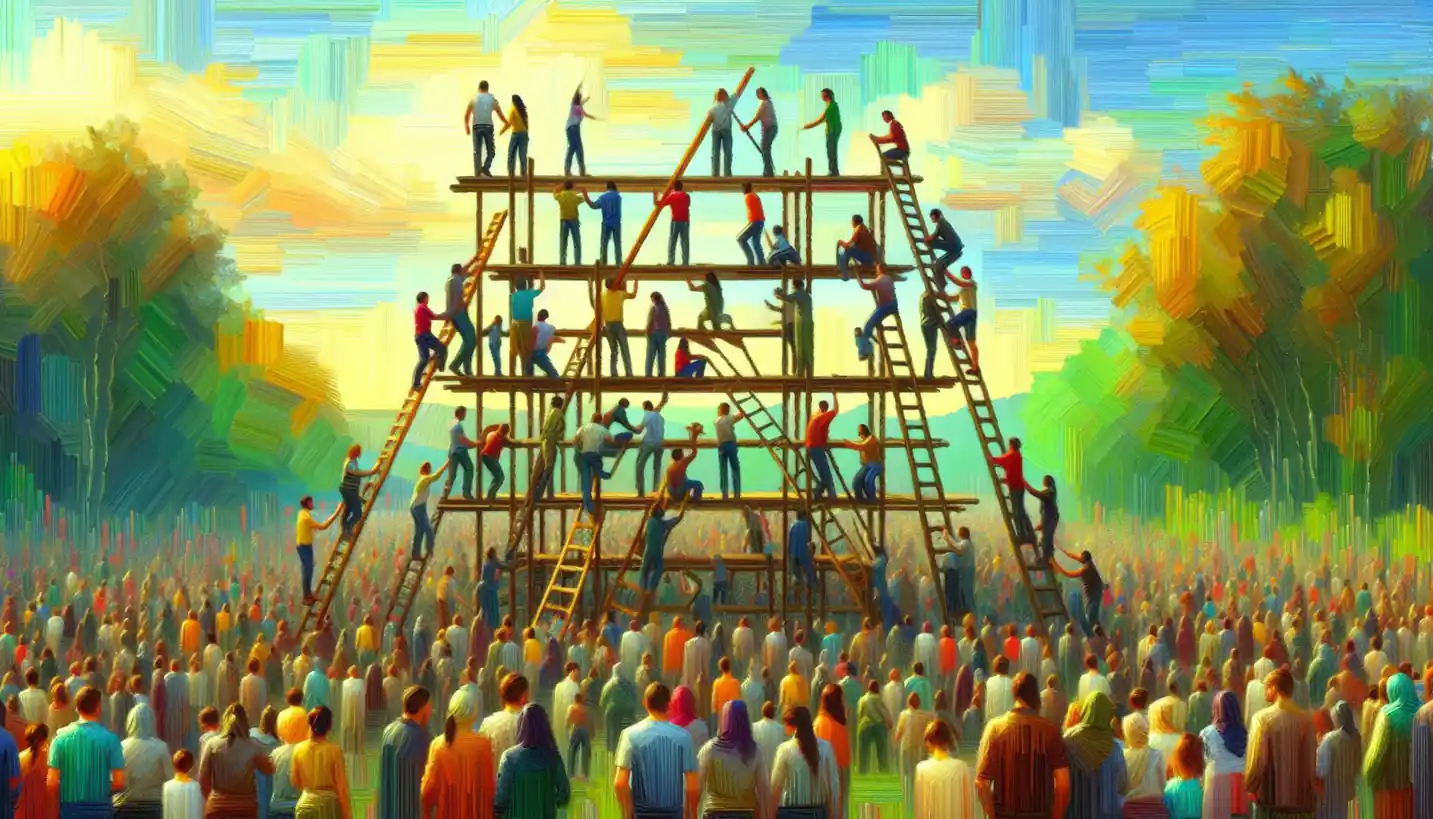· Sociology · 5 min read
Religious Syncretism: Bridging Beliefs Across Cultures
Religious Syncretism: Bridging Beliefs Across Cultures focuses on the blending of different religious practices and ideas. Explore the dynamic and evolving nature of global faith interactions.

Think about mixing different colors of paint to create new shades. Religious syncretism works kind of like that, blending different faiths and beliefs to form something new and unique. This concept is like a melting pot of religion, where ideas, practices, and rituals from different traditions come together, reshaping spiritual landscapes across the world.
Understanding Religious Syncretism
At its core, religious syncretism is the process where distinct religious traditions and ideas merge. It’s found everywhere, from ancient times to our modern world. This blending can happen in many ways, such as incorporating elements from one religion into another, forming entirely new religious movements, or adapting beliefs to fit cultural practices.
For example, when we look at the vast spread of Christianity, it’s interesting to see how it blended with local customs and pagan rituals as it spread across Europe. The adoption of Christmas, which coincides with earlier pagan winter celebrations, is a well-known case of this fusion.
How Does Syncretism Occur?
The blending of religions usually happens when different cultures come into contact, often through trade, conquest, migration, or missionary work. Imagine people moving from one place to another and bringing their beliefs with them. In new environments, these beliefs might mix with existing ones, creating a syncretic religion.
Take, for instance, the African diaspora and the Caribbean islands. Many enslaved Africans brought their traditional beliefs with them, which intermingled with Christianity to form practices like Voodoo or Santería. These are classic examples of how new faiths can arise, forming vibrant cultural and religious tapestries.
The Role of Power and Politics
Power dynamics play a crucial role in syncretism. Historically, when a powerful group imposed its religion on another, syncretism allowed the less powerful group to retain its traditions while outwardly adopting the dominant religion. This mix often helped maintain social cohesion and political stability, but sometimes led to tension and conflict.
For example, during colonization, indigenous beliefs were often blended with the imposed religions of colonial powers. This allowed local people to preserve their cultural identity while adapting to new political realities, demonstrating the resilience and adaptability of spiritual practices.
Syncretism in Today’s World
Today, religious syncretism continues to evolve, reflecting our increasingly interconnected world. In many urban areas, diverse populations bring together a mix of religious beliefs, leading to new, hybrid forms of spirituality.
Consider the New Age movement, which often combines elements of Eastern religions like Buddhism and Hinduism with Western spiritual practices. This kind of syncretism shows how people are seeking more personalized spiritual paths, drawing from multiple traditions to create something that resonates personally.
Stories of Syncretism: The Tale of Sikhism
Let’s dive into the story of Sikhism, a fascinating religion that emerged in the Punjab region of India in the 15th century. Sikhism combines elements of both Hinduism and Islam, drawing from their rich tapestry of beliefs and practices. Guru Nanak, its founder, sought to bridge these traditions, emphasizing equality, community service, and devotion to one God.
This synthesis wasn’t just a neutral fusion—it was a conscious effort to address religious conflict and encourage a harmonious coexistence. Sikhism’s story is a testament to how syncretism can create a new spiritual path that champions peace and unity.
The Importance and Impact of Syncretism
Why does syncretism matter? It offers a lens through which we can see how religions adapt to societal changes and human needs. Syncretism provides insight into cultural exchange, human creativity, and the ongoing journey for spiritual meaning. It challenges the boundaries of traditional religious categories and invites us to think more fluidly about faith and belief.
Moreover, understanding syncretism can foster greater tolerance and appreciation for the diverse ways people experience spirituality. By learning about different combinations of beliefs, we can appreciate the complexity of human cultures and the shared search for understanding.
Challenges and Controversies
Religious syncretism isn’t always received positively. Some see it as a dilution of pure faith or a threat to traditional religious authority. This tension can spark debates about authenticity and cultural appropriation. For instance, integrating new elements into a longstanding tradition might upset those who value historical continuity.
Alternatively, others celebrate syncretism as evidence of religion’s dynamic and evolving nature. They view it as a testament to the ongoing dialogue between cultures and the adaptability of human belief systems.
Looking Forward: The Future of Syncretic Religions
In the ever-globalizing world, where ideas spread with the click of a button, syncretic religions might evolve even faster. This raises intriguing questions: How will new technologies influence religious blending? Will virtual communities create new syncretic spiritual practices?
Emerging trends suggest that as people become more connected, they might continue to seek spiritual experiences that transcend traditional boundaries, creating new forms of religious expression that reflect the diversity of our modern world.
Conclusion
The concept of religious syncretism is a remarkable reminder of the interconnectedness of human culture and spirituality. It shows us that beliefs are not static; they evolve and adapt, much like the people who hold them. As we explore the rich tapestry of syncretic religions, we gain a deeper understanding of our shared past and an appreciation for the diverse ways humans seek meaning and connection in their lives. Whether it’s a centuries-old tradition or a modern spiritual path, syncretism invites us to think creatively about faith and embrace the beautiful complexity of the world’s religions.



